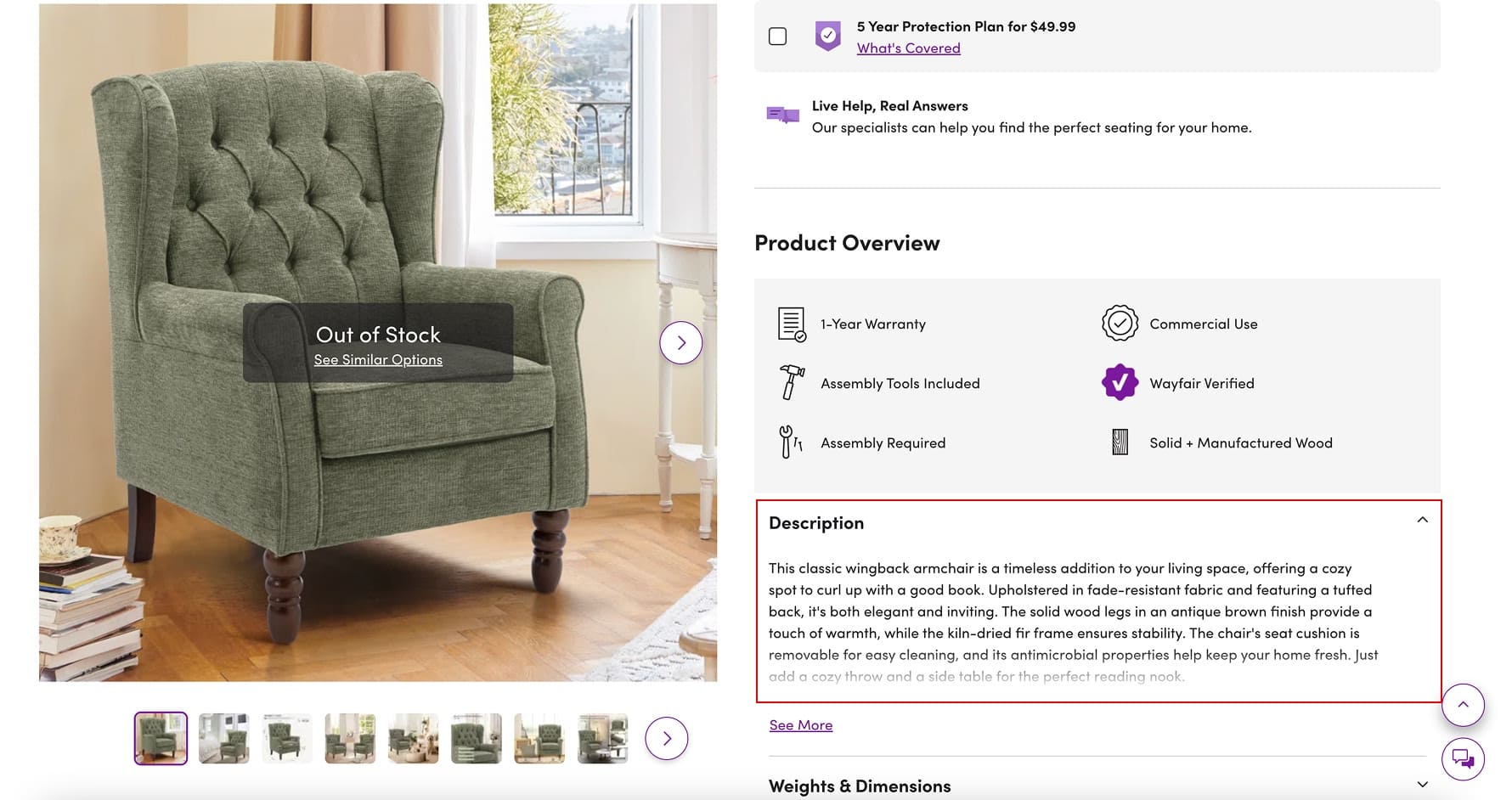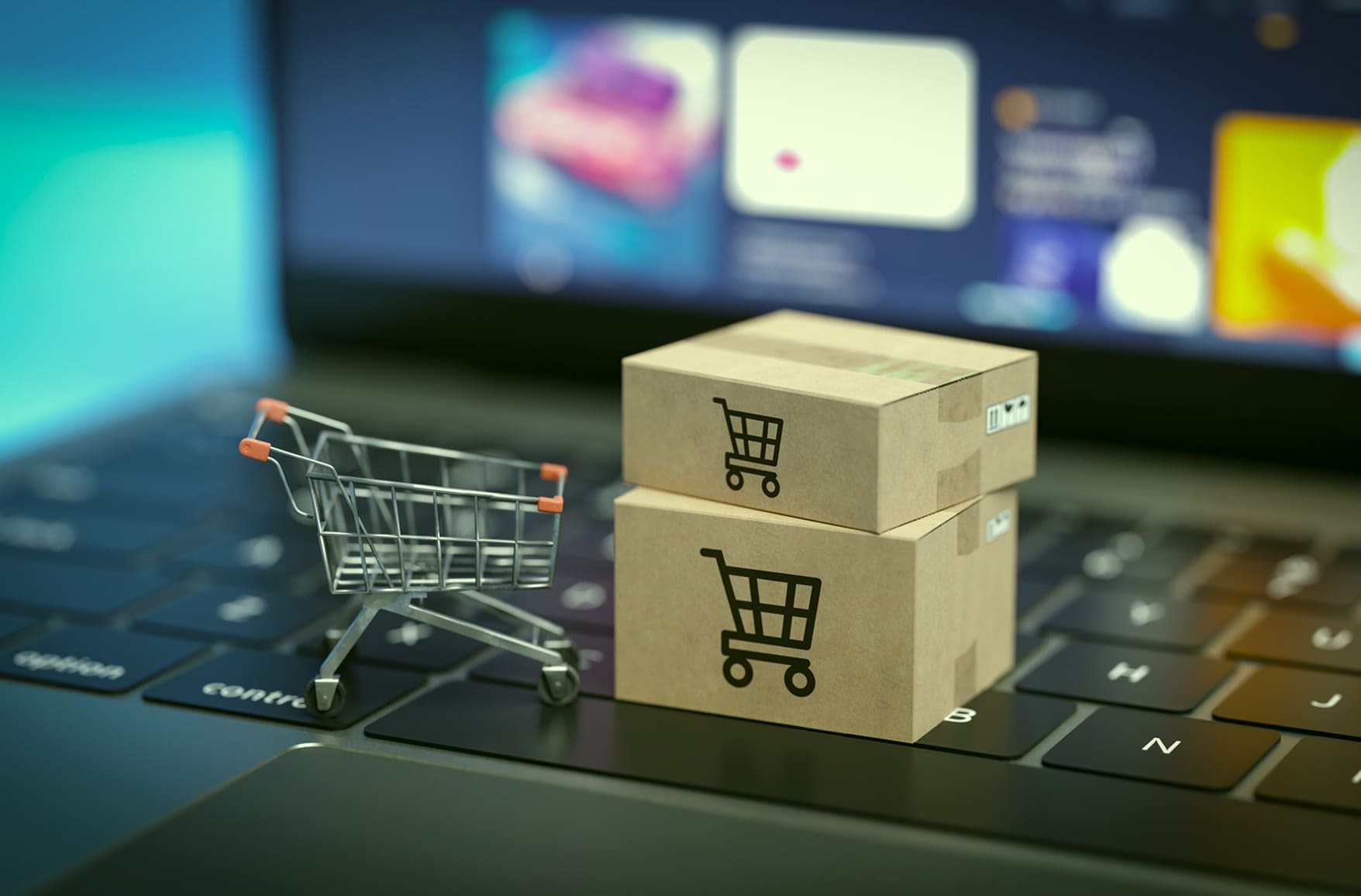In the territory where online sales are the foundation of modern retail, Shopify for ecommerce has grown to its prominence as never before. It is used by over 4.5 million active merchants worldwide, who can sell anything via their Shopify-based stores — from pet food to fitness clothes and coffee beans.
According to Statista forecasts, we may expect to witness continuous expansion in online retail sales, fueled by consumer demand and technological advancements alike. In 2024, retail ecommerce sales hit the figure of $6.3 trillion on a global scale. By 2027, as experts predict, the numbers will spill over the mark of $8 trillion.

Source: Statista.
Want a bite of that trillion-dollar pie? Then you cannot escape the necessity to solidify your online presence in the world of today. Shopify may be just the right tool to help you win your fair share of the market. After 2024, with new groundbreaking technology hitting the headlines literally every week, the year 2025 is destined to be packed with opportunities for businesses of all shapes and sizes. The platform is actively evolving and embracing new tech and approaches into its strategy — AI (how could it not?), mobile-first solutions, cross-border market expansion, and more. Let’s explore why to use Shopify for ecommerce in 2025 and how it can level up your online store.
* This article was created in close collaboration with our in-house Shopify developer Viktoriya Pashkovskaya.

What Is Shopify?
We assume, if you’ve landed on this page, you are familiar with the notion of Shopify for ecommerce. It is loved by both small and large, big and artisan, local and global, as it is a one-stop station for everyone who needs to jumpstart their store, yield sales, and facilitate business growth. Its vast ecosystem, consisting of various tools, products, and applications, operates as a unified system to help businesses sell to buyers anywhere in the world.
For detailed information on the platform and its capabilities, we advise you to visit Shopify’s official website or check the video below to refresh your knowledge.
What is Shopify? How It Makes Your Money

In the meantime, we’ll proceed to the most relevant advantages of the platform for modern-day challenges and top Shopify development trends we are certain will bolster its even wider acceptance in 2025.
Why Use Shopify for Ecommerce in 2025?
You’ll Like How It Is Easy to Use by Any Business
Once you get used to it, you’ll never ask “how to use Shopify for ecommerce”. The platform’s success draws on its user-friendly and intuitive design, where a drag-and-drop builder and a rich library of customizable themes enable businesses of all sizes to devise professional storefronts. Among those 4+ million websites that rely on Shopify, there is a significant portion of SMEs whose employees are not even required to have coding skills to work with Shopify. However, when things get complicated as your business expands, it’s always a wise decision to resort to developers with professional Shopify development experience.
Through its simplicity, Shopify’s direct-to-consumer model can cater to an impressive array of retail businesses, from niche artisan brands to global giants like Reebok. This adaptable nature has propelled Shopify to the top list of leading ecommerce solutions.
Who Uses Shopify
A global lifestyle brand that sells footwear and apparel.
A fast fashion retail company that operates primarily online.
A multinational athletic apparel retailer from England.
One of the largest food processing companies in the world.
The official shop of the world-famous sandbox game.
A German-owned British publishing house.
An Austrian multinational company that creates energy drinks.
A merchandise store of the renowned multinational streaming service.
The official store of the American singer-songwriter.
The official store of the British singer and designer.
You Will Be Able to Sell across Multiple Channels and Tap into Social Commerce
The flexible nature of Shopify for ecommerce extends far beyond the design aspect. Ecommerce is no longer confined to websites only — consumers want a shopping experience across multiple platforms. To satisfy this need, Shopify allows companies to interact with sales channels like Facebook, Instagram, TikTok, and even marketplaces like Amazon and eBay, allowing them to connect with potential customers wherever they may be. “The future of retail is omnichannel,” says Shopify, which hints at the company’s ambitions to upgrade its multi-platform shopping capabilities.
In 2025, social commerce is expected to grow by around 35%, so you can imagine that if you tweak your sales strategy to include more sales touchpoints, enter into influencer partnerships, and enable direct social selling, it will be much easier to make a sale. Shopify offers tools for coordinated inventory management and direct marketplace integrations to help you tap into this realm.
You Will Scale as You Grow
Startups adore Shopify for its ease of use, and SMEs have traditionally been its target audience. Yet, the company cannot ignore the vast potential in offering its services to larger clients, and it shines the most when it comes to scalability. The company offers an enterprise-grade solution called Shopify Plus that is most fitted for large-scale enterprises and especially wholesalers. There you get such high-level features as automation tools, custom checkout experiences, or extended API integrations — virtually anything you need to scale on the fly. Global names such as Heinz or Gymshark resorted to the Plus option to bring about changes to their operations and ramp up growth efforts.
Looking ahead to 2025, we may expect more AI-based automation, upgraded fraud detectors, inventory management tools, and new pricing strategies targeted at cost reduction and shrinkage of manual labor.

Let’s talk how Shopify can help you start earning money via your online store.
Artificial Intelligence in the Spotlight
You wouldn’t expect us to skip the issue of artificial intelligence, would you? That’s right, AI is unavoidable for businesses seeking to get the upper hand. The emergence of remote work proved that ecommerce can run a business from any location in the world, provided they have great software and established processes. As Shopify merchants scale, doing your business smartly and faster than your rivals becomes crucial.
Here’s how AI can revolutionize how to use Shopify for ecommerce:
AI-Driven Personalization: The Future of Customer Care
AI is changing the way Shopify merchants can interact with their buyers. Thanks to AI integration, you will be able to analyze customer behavior and make your customer engagement strategy more intuitive and data-driven, rather than taking a universal approach. Feeling that their shopping experience is special, your buyers will be inclined to finalize the payment (drive conversions) and return to your store in the future (build long-term brand loyalty).
Shopify’s AI-based recommendation engine will analyze your customers’ browsing history, purchase records, and real-time interactions. This, in turn, will allow you to add AI-powered recommendations that can create a sense of discovery, in contrast to static product suggestions that may seem disconnected and even irrelevant for the customer shopping journey. Statista’s experts found out that around 45% of Millennials and Gen Z consumers would prefer personalized product suggestions because they make them feel valued.
That said, AI in Shopify for ecommerce is not about product recommendations — it is about transforming digital marketing for Shopify stores as well. With the help of the technology, you’ll be able to segment your audiences and deliver tailored email campaigns accompanied by social media ads across various channels. This way, your message will hit the right customer at the right place and time. It can be a simple reminder about an abandoned cart or a targeted discount on a wishlist item — even such minor actions contribute to repeat purchases.

Chatbots: Automated Customer Service
Against the backdrop of the continuous evolution of natural language processing (NLP), chatbots themselves have evolved into more intelligent tools and can be trusted with complex tasks that they can manage almost as well as humans. Typical AI-based chatbots can take care of customer inquiries, generate product recommendations based on customer input or browsing data, or even handle orders, and that is done 24/7.
Let’s resort to Gymshark’s example how to use Shopify for ecommerce. Their AI chatbot gets the job done through the meticulous combination of NLP and personalized responses, which feels as close to human interaction as possible.

For Shopify merchants, this form of customer support is a great way to cut support costs and reduce response times. No less important is the fact that buyers, on their part, also agree that the technology is a new norm of shopping experience, with 74% of consumers choosing a bot over a human for quick answers.
With such bots integrated, Shopify for ecommerce can further drive sales by navigating the shopper through the purchasing process or detecting abandoned carts. With timely reminders to go on shopping, your store has all the chances to recover lost sales.

Predictive Analytics: No Crystal Ball Needed
The tried and tested blend of machine learning and statistical algorithms enables Shopify merchants to approach their selling and marketing strategies from a data-driven perspective. With predictive analytics, you run your historical data through AI to obtain future trend forecasts and adjust prices and inventory accordingly.
One of the most crucial use cases of predictive analytics in Shopify for ecommerce is dynamic pricing. You no longer need to manually adjust pricing or to entrust this strategy to people who are prone to mistakes and bias. Instead, AI-powered systems analyze such parameters as supply, demand, competitor pricing, and customer behavior and adjust pricing in real time.

Another issue that AI can handle just great for you is overstocking or understocking products. Neither is good for the sales business, as they entail revenue losses. With predictive analytics, you can forecast demand for your Shopify store goods using such data as historical sales, seasonal changes, trends, and market situation. Thus, you will be able to maintain optimal stock levels, reduce waste, and, as a result, improve cash flow.
Beyond that, Shopify is embedding analytics into marketing strategies. Use it for your planning, and you’ll know anticipated trends or how much money you need for advertising or which campaign is best to invest in the coming months. Your promotions will be precise, targeting the right customers at the right time.

Workflow Automation: Let AI Do the Boring
One of the reasons why you should use Shopify for ecommerce is that with this platform, you can go beyond just selling products and provide a truly smooth and personalized experience for your buyers. And the key to doing that lies in AI-driven workflow automation, whether entirely or in certain aspects.
There are over 30 million online stores out there at the moment, with each of them craving attention from their target audience. How can you make the difference in this evolving landscape? Through great design (check Shopify website templates and do not forget that you can always create a 100% unique website with Shopify), sustained performance, personalization, compelling content, and the latest SEO practices. Automated AI-powered tools can take the burden off your shoulders and relieve you of some of these efforts. You get quality with no harm done to efficiency.
For instance, writing product descriptions is both an art and a science. Your texts should be informative so that your visitors get a clear understanding of the product, yet engaging enough to persuade them to add the item to the basket and close the sale. Check an example from Wayfair.

Crafting descriptions for the entire catalog can be a daunting, resource-intensive task that will eat up much of your time if done manually. That’s when Shopify magic comes into town to help you out with the generation of hundreds of product descriptions in a matter of seconds — consistent brand voice and SEO guaranteed.
AI workflow automation goes far beyond this example of content creation. It also targets:
- Order processing and fulfillment — You can automate repetitive tasks and reduce manual errors.
- Email and marketing campaigns — With AI, you will be able to increase engagement and sales through personalized email outreach using customer behavior.
- Automated customer service — We’ve detailed this aspect of your business above.

Voice Commerce: Now You Can Raise Your Voice to Do the Shopping
According to research, 30% of internet users aged 16–64 worldwide use voice assistants like Alexa, Google Assistant, and Siri on a weekly basis, which points to voice search becoming a preferred method for many. You can rest assured — their inquiries have long passed setting reminders or checking the weather, and now include shopping assistance.
In 2025, voice commerce has all the potential to turn tables for ecommerce, with Shopify leading the way in adopting voice-activated capabilities. This tech allows consumers to search for items, detail prices, check availability, track orders, and even make purchases — no touching (any device). This hands-free method of shopping can strike a chord with busy customers, tech-savvy buyers, people with disabilities, or those who prefer voice interactions. Your shopping experience becomes even more accessible.
M-commerce: The Mobile Frontier
Shopify for ecommerce recognized the importance of mobile devices for e-commerce long ago and has since been following a mobile-first strategy to provide you with tools to bite a nice chunk of that mobile commerce (m-commerce) market.
Mobile Optimization and Progressive Web Apps (PWAs)
The number of mobile shoppers is on the rise and shows no sign of slowing down. For Shopify, it has always been a matter of utmost importance to ensure Shopify merchants offer great mobile experiences to their customers. The company has actively invested in mobile-friendly themes and fast load times. As we look ahead to 2025, they intend to pursue even deeper integration of Progressive Web Apps (PWAs), taking the best of the two worlds — website development and native mobile app development.
PWAs are basically a hybrid approach since you get an app-like experience with no need to download an app. Major advantages of PWAs cover fast loading times and offline capabilities, each of them contributing to better user experience across all devices and customer retention. This approach ensures that your shoppers will enjoy smooth browsing, even in environments with limited or no internet connectivity. As a result, your store will engage with them at any time and on any device.
One-Click Checkout with Shopify Payments
Mobile shoppers require quick, reliable, and hassle-free checkout. They simply don’t have time and available screen space for complicated transactions. Thanks to Shopify’s own payment solution, Shopify Payments, and the one-click checkout tool, Shop Pay, it is becoming easier to reach the mobile audience. By the way, back in 2021, the company shared that Shop Pay was 70% faster than conventional checkout methods and boasted a 1.72x higher conversion rate.
In 2025, we may expect from Shopify more upgrades for Shop Pay, with a special focus on speed and security. With the company’s ongoing efforts to optimize themes and checkout flows for mobiles, your buyers will appreciate the smooth and frictionless experience on the go.
Global Ecommerce Expansion and Shopify Markets
The world’s B2C ecommerce market is projected to hit $4.8 trillion in 2025, and even larger figures are expected in the years to come. By 2027, we may witness 23% of total retail sales occurring online. As ecommerce goes on to wipe borders and becomes more international, Shopify’s global capabilities are set to grow, in no small part thanks to AI-based translation tools and automated compliance management that can simplify its entry into uncharted markets.
The company recently presented a standout feature called Shopify Markets. This tool targets global expansion and provides businesses with regional domains, currencies, and languages to simplify cross-border sales and reach more international customers.

Shopify’s Growing Ecosystem
The reason for Shopify’s success is not only the great performance of its core platform. No lesser part is attributed to the vast ecosystem of third-party apps and developers, with the Shopify App Store housing over 6,000 apps. These extras cover anything — from marketing automation to inventory management and SEO optimization.
In 2025, we will undoubtedly see further expansion of this rich ecosystem and more integrations — AI, blockchain, AR, VR, and many other highly potential technologies are destined to join the Shopify game.
In addition, Shopify’s open, developer-friendly nature has paved the way for the emergence of an active community offering great support.

Is Shopify Good for Ecommerce?
It’s great! The platform already boasts such a rich functionality that is being upgraded as we speak. Check for yourself their winter 2025 edition here. Do not forget to tick the “NOT BORING” option to get a truly creative and immersive experience of how Shopify shares updates with the public.
Shopify’s performance in the fourth quarter of 2024 has been nothing short of impressive. According to multiple press releases and industry analyses, the company reported a Q4 revenue growth acceleration of 31%. Which means more money for technical evolution and innovation drive.
If you are still hesitant whether you can do Shopify development on your own or why use Shopify for ecommerce in the first place, reach out to our Shopify development company — we’ll be happy to help you solve this dilemma.


















